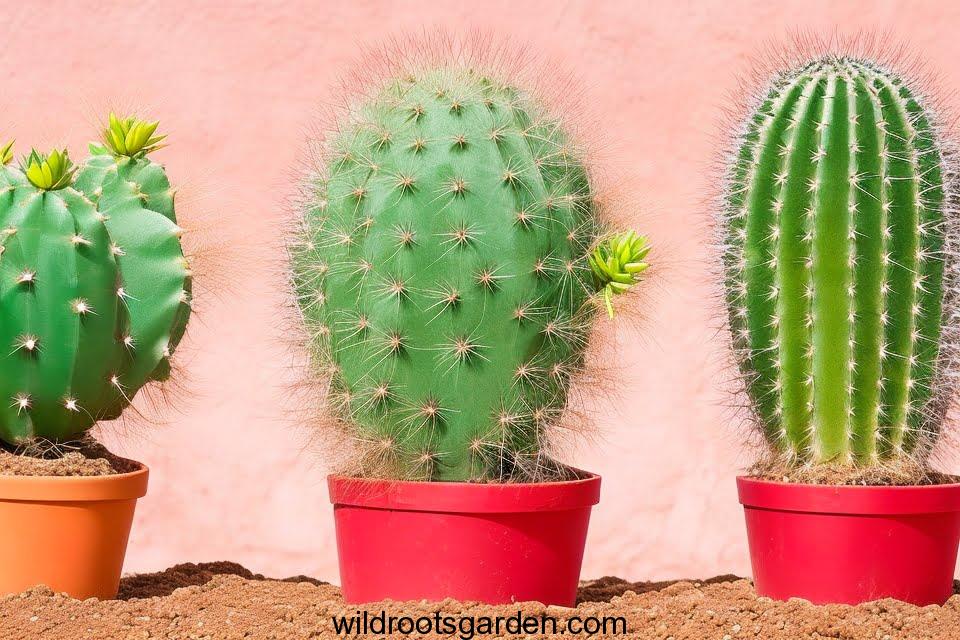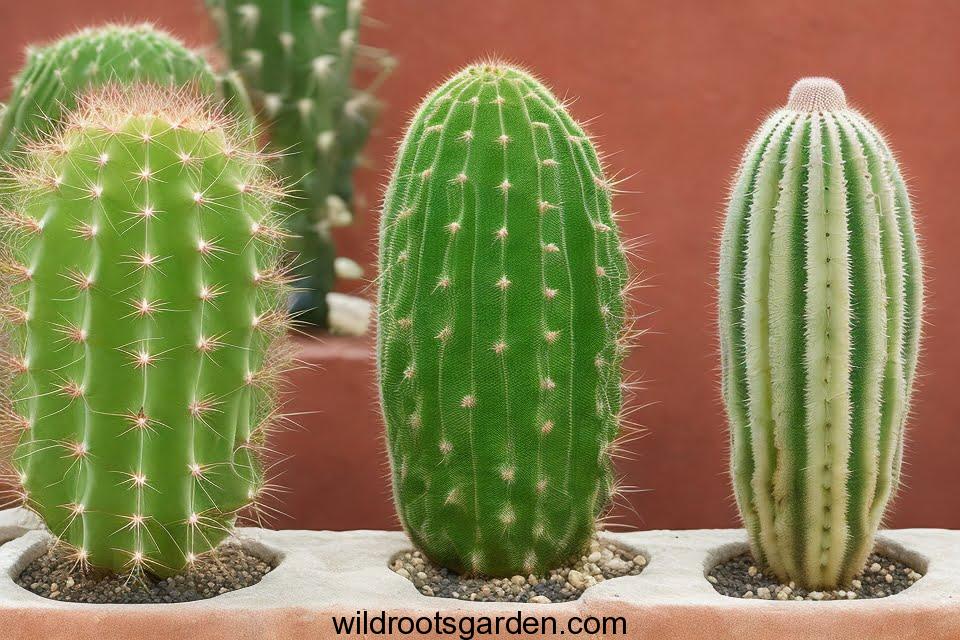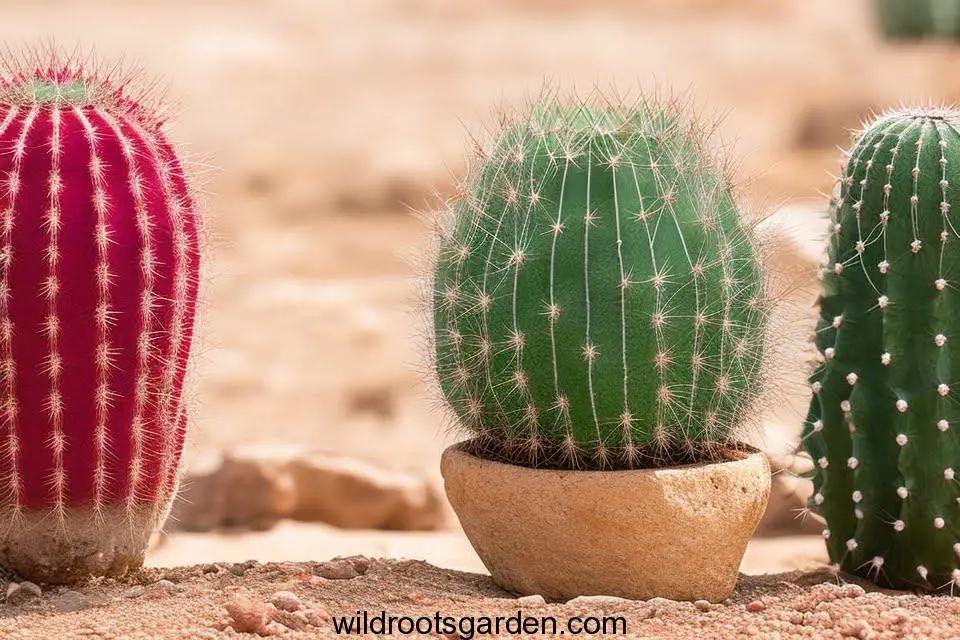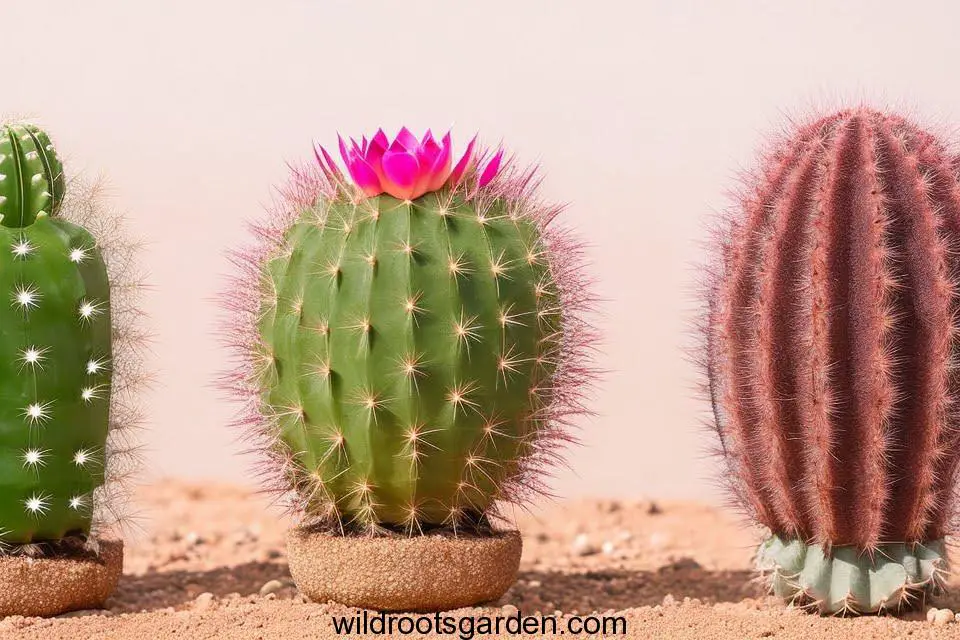3 Adaptations of a Cactus: Discover How These Tactics Propel Their Thriving in Arid Environments and Dive into the Fascinating World of Cactus Adaptations.
Table of Contents

3 Adaptations of a Cactus that Define a Cactus:
Forget camels, cacti are the true kings of desert survival! Their success hinges on three ingenious adaptations that transform them into drought-defying champions. Brace yourself for:
1. Succulent Supremacy: Imagine leaves overflowing with water. That’s a cactus stem! Cacti store precious moisture in these fleshy “batteries,” ensuring survival through long, dry spells.
2. Spiny Shields: Don’t underestimate these prickly guardians! Spines not only deter thirsty animals but also minimize water loss through tiny openings called stomata. Think of them as nature’s drought-proof locks.
3. Nocturnal Nomads: While you’re tucked in bed, cacti unleash their hidden beauty. Their blooms burst open under the moonlight, attracting night-flying pollinators and minimizing water loss from the scorching daytime sun. These resourceful adaptations, like nature’s Swiss Army knife, allow cacti to conquer the drought and thrive in the harshest environments.
The intriguing plants known as cacti have developed special adaptations that allow them to survive in arid and hostile conditions. These are amazing examples of how resilient nature is since it can endure scarce water supplies and harsh temperatures. In this post, we’ll look at three crucial adaptations that cacti use to survive in harsh environments.
Water Storage: The Ultimate Survival Strategy
3 Adaptations of a Cactus. Cacti have a remarkable capacity for water storage, essential to their survival in dry climates. During times of rainfall, they can retain a lot of water in their fleshy, thick stems, which act as water reservoirs. The cactus is kept alive by the water it has saved during water scarcity.
Modified Leaves: Minimizing Water Loss
Cacti have developed modified leaves with spines to minimize water loss during transpiration. These spines serve several purposes, including preventing animals from eating the cactus, providing shade to lower water evaporation, and assisting in gathering and directing dew or rainfall toward the stem to maximize water absorption.

Spines: Protection and Moisture Conservation
The spines of cacti are recognized for being essential in defending the plant against predators and harsh weather. These spines not only deter animals from approaching but also create a microclimate by surrounding the cactus with a layer of still air, which lowers water loss due to evaporation.
Root Systems: Absorbing Water Efficiently
In quest of water, cacti have developed vast root systems that reach wide and shallow. Since these roots are quite effective at taking water from the earth, the cactus can swiftly snag any accessible rainwater after intermittent rainfall. Also, during wet times, the roots can store water for later use.
Flower Adaptations: Attracting Pollinators
Even in harsh conditions, cacti have developed beautiful blossoms to draw pollinators. To take advantage of the cooler nighttime temperatures and to draw bats and moths—the main pollinators for many cacti species—these flowers frequently bloom at night. The flowers are typically big and vibrant, giving pollinators a visual feast.
Stem Shape: Reducing Surface Area
Cacti stems have distinctive shapes and structures as adaptations to reduce the amount of surface area exposed to adverse environments. Because they are frequently spherical or columnar, cacti stems receive less sunshine and lose less water via evaporation. Cacti can preserve water and tolerate the intense heat of their environment thanks to this effective design.
Photosynthesis: Adapting to Limited Light
In dry areas with little sunlight, cactus have modified their photosynthesis mechanism to survive. They engage in CAM (Crassulacean Acid Metabolism), a specialized kind of photosynthesis that enables them to open their stomata at night and close them during the day. By decreasing daytime transpiration while still absorbing carbon dioxide for photosynthesis, this adaptation reduces water loss to a minimum.

Reproduction: Ensuring Species Survival
To ensure the survival of their species, cacti have evolved special reproduction techniques. Several cacti can reproduce sexually and asexually. Pollination is a process that leads to sexual reproduction and the development of seeds. Cacti can make genetically identical copies of themselves through stem cuttings or offshoots, a process known as asexual reproduction.
Long Lifespan: Weathering the Test of Time
Cacti have the amazing capacity to live for many decades and in some cases even centuries. Its extended lifespan is a result of its modest growth rate and resistance to extreme weather. Cacti can live and grow for a long time by utilizing their adaptations to conserve energy and water, acting as timekeepers.
Cultivation: Bringing Cacti to New Environments
Because of their distinctive qualities, cacti are a preferred plant to cultivate in many regions of the world. Because of their striking look and propensity for thriving in low-water situations, they have become popular additions to indoor and outdoor gardens. Cacti can add beauty and a touch of the desert to any location with the right care and attention to their particular requirements.
Cacti in Art and Culture: Symbolism and Inspiration
Artists, writers, and cultures from all over the world have been fascinated by cacti for a very long time. Cacti have been a source of inspiration for modern art and design as well as traditional Native American iconography thanks to their toughness and distinctive beauty. Their depiction in literature and popular culture serves as a reminder of the resilience and adaptation of nature’s creatures.
Conservation: Protecting Cacti and Their Habitats
Climate change, illegal collecting, and habitat loss pose threats to numerous cacti species. The preservation of these extraordinary plants and their environments depends heavily on conservation efforts. Sustainable production, education, and habitat preservation programs all work to guarantee the cacti are around for future generations to enjoy and admire.
Cacti in Medicine: Potential Therapeutic Uses
Cacti may be useful as medicines in addition to being beautiful plants. Several species have chemicals that have been utilized to treat a variety of diseases in conventional medicine. The full medicinal potential of cacti, including potential use in medicines and the creation of novel therapies, is still being explored.
Cacti in Landscaping: Beauty and Low-Maintenance
Due to their distinct characteristics, cacti are the best plants for landscaping tasks that call for low-maintenance and water-saving alternatives. Its variety of sizes, colors, and shapes enables the creation of imaginative and eye-catching creations. Cacti is an attractive addition to gardens and landscapes that can help to improve sustainability by using less water.
Bonus Tip: Remember, cacti are living laboratories of evolution! Their amazing adaptations showcase the power of natural selection, shaping them into the spiky superstars of the desert world.
Final Thoughts
Amazing plants known as cacti have developed extraordinary adaptations to thrive in tough, desert settings. Nature’s inventiveness is on display in its capacity to store water, reduce water loss, protect itself, and draw pollinators. Cacti continue to fascinate and inspire us with their tenacity and beauty, whether they are found in the wild, in gardens, or in other cultural manifestations.
FAQs About 3 Adaptations of a Cactus
What are the 3 characteristics of cactus?
a)Water Storage: Cacti have plump stems and leaves, called succulents, that act like water sponges, allowing them to survive in dry conditions.
b) Spiky Defenders: Those aren’t leaves! Cacti have spines instead, which help them avoid thirsty animals and keep precious moisture locked in.
c) Shallow Spread: Forget deep roots! Cacti have wide-spreading shallow roots that quickly soak up any precious rain that falls.
What are the adaptations of a cactus flower?
a) Moonlight Revelry: They bloom at night! This avoids water loss from hot daylight and attracts special pollinators like moths and bats.
b) Dazzling Displays: Forget shy violets! Cactus flowers come in vibrant colors and strong scents, guiding their night-loving friends.
c) Tough as Thorns: The petals are thick and sturdy, protecting delicate reproductive parts from harsh desert conditions.
Why do cactus adapt?
Living in the desert is tough! With little water, scorching sun, and hungry animals, cacti need special tricks to survive:
a) Water Wise: Their adaptations, like succulents and shallow roots, help them hold onto every drop of water.
b) Spiny Shields: Those prickly guardians keep thirsty critters at bay, protecting their precious water reserves.
c) Nighttime Romance: Blooming at night ensures successful pollination even in harsh conditions, essential for cacti to keep their species thriving.
What is a Behavioural adaptation of a cactus?
Not exactly, but they do show a cool adaptation called phototropism. Their stems grow towards the sun, making the most of any available sunlight for energy production. It’s like a slow, sun-seeking dance!
What are 5 adaptations of a cactus?
Succulent stems and leaves: Store water for long periods.
Spines: Reduce water loss and deter herbivores.
Shallow root system: Captures fleeting rain and navigates rocky terrain.
Nocturnal blooms: Minimize water loss and attract specific pollinators.
Tough petals: Protect reproductive organs from sun and damage.
There you have it! Cacti are masters of adaptation, showing us how amazing life can be even in the toughest environments. Remember, the next time you see a cactus in the desert, appreciate its incredible adaptations and how they allow it to thrive in a world of sun, sand, and spines.
Website Resources about Cactus Adaptations:
General Information:
- National Geographic: https://www.nationalgeographic.com/travel/article/saguaro-national-park-offers-so-much-more-than-famous-cacti – Explores various cactus adaptations and their importance for survival.
- The Cactus Patch: https://www.bachscactus.com/ – Offers an overview of common cactus features and their functions.
- Britannica: https://www.nps.gov/teachers/classrooms/plant-adaptations.htm – Discusses desert plant adaptations in general, including those of cacti.
In-Depth Articles:
- Smithsonian Magazine: https://www.succulent.care/succulent-adaptations/ – Delves into the science behind succulents, including water storage and transpiration reduction in cacti.
- DesertUSA: https://succulentalley.com/cactus-adaptations-in-the-desert/ – Provides a detailed explanation of various cactus adaptations with diagrams and examples.
- Missouri Botanical Garden: https://www.missouribotanicalgarden.org/Portals/0/Gardening/Gardening%20Help/Factsheets/Cactus%20and%20Succulents10.pdf – Offers a scientific perspective on succulent plant features, including those found in cacti.
Visual Resources:
- PBS LearningMedia: https://www.quora.com/Why-is-the-stem-of-a-cactus-fleshy-and-green – Features an interactive graphic exploring the anatomy of a cactus and its adaptations.
- Desert Plants of North America: https://azstateparks.com/desert-plants – Offers a vast collection of cactus photos and information by species.
- KQED Science: https://www.slps.org/cms/lib03/MO01001157/Centricity/Domain/1127/figurativelang21.pdf – Presents a video and article comparing cactus adaptations to those of camels.
Bonus Resources:
- Cactus Conservation International: https://cactusconservation.org/ – Focuses on the importance of cactus conservation and their ecological roles.
- University of Arizona Cactus Garden: https://facops.stanford.edu/arizona-garden – Offers educational resources and interactive exhibits on cacti and their adaptations.
- Desert Botanic Garden: https://dbg.org/ – Provides information on desert plants, including cacti, with interactive displays and gardens.
Remember, these are just starting points! Explore and dive deeper into the fascinating world of cactus adaptations to unlock the secrets of their desert resilience.
I hope these resources help you learn more about the amazing adaptations of cacti!

